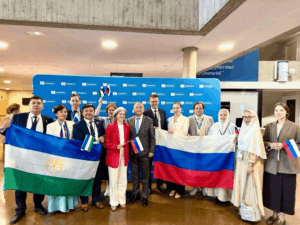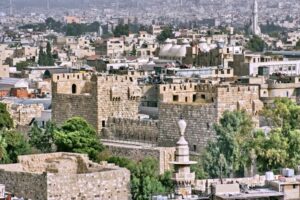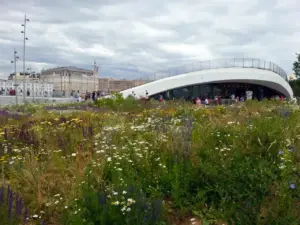Камчатка — редкое место на планете, где можно наблюдать рождение новых ландшафтов. Каждый год вулканы парка выбрасывают тонны пепла, горячие источники меняют русла рек, а фумаролы с температурой 700°С напоминают: это не музей природы, а гигантская лаборатория Земли.
На территории природного парка «Вулканы Камчатки», общая площадь которого составляет более 3 миллионов га, приходится огромное количество вулканов – одна треть всех исполинов полуострова Камчатка.
The volcanoes are located in four of the five cluster areas that today make up the Volcanoes of Kamchatka Nature Park - the "Nalychevo", "Kliuchevskoi", "Yuzhno-Kamchatsky and Bystrinsky". Of the 126 volcanoes located in the territory having the status of Specially Protected Natural Area, 13 are active.
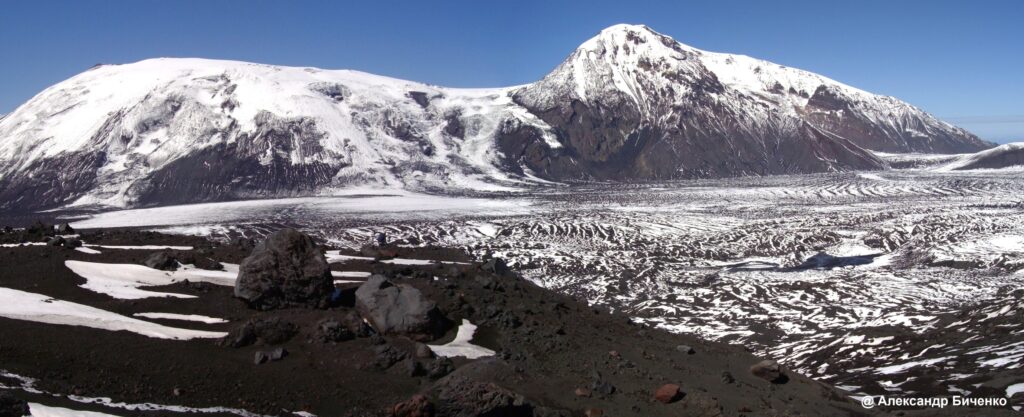
The history of Kamchatka's natural parks dates back to 1995. It was then, on August 18, 1995, that three natural parks were established by the decree of the Governor of the Kamchatka region - "Nalychevo, Bystrinsky and Yuzhno-Kamchatsky. Four years later, in 1999, they were joined by another park - . "Kliuchevskoi". In 2010, all four territories became part of the regional state institution "Kamchatka Volcanoes Nature Park", established to preserve and protect unique natural objects. In addition, the park aims to create favorable conditions for the development and prosperity of tourism and recreation, conducts active work on environmental education of residents and visitors of Kamchatka and environmental monitoring. In August 2015, by the decision of the Ministry of Natural Resources and Environment of Kamchatka Krai, the KGBU "Kamchatka Volcanoes Nature Park" was merged with the KGBU "Directorate of the salmon sanctuary "The Kohl River.".
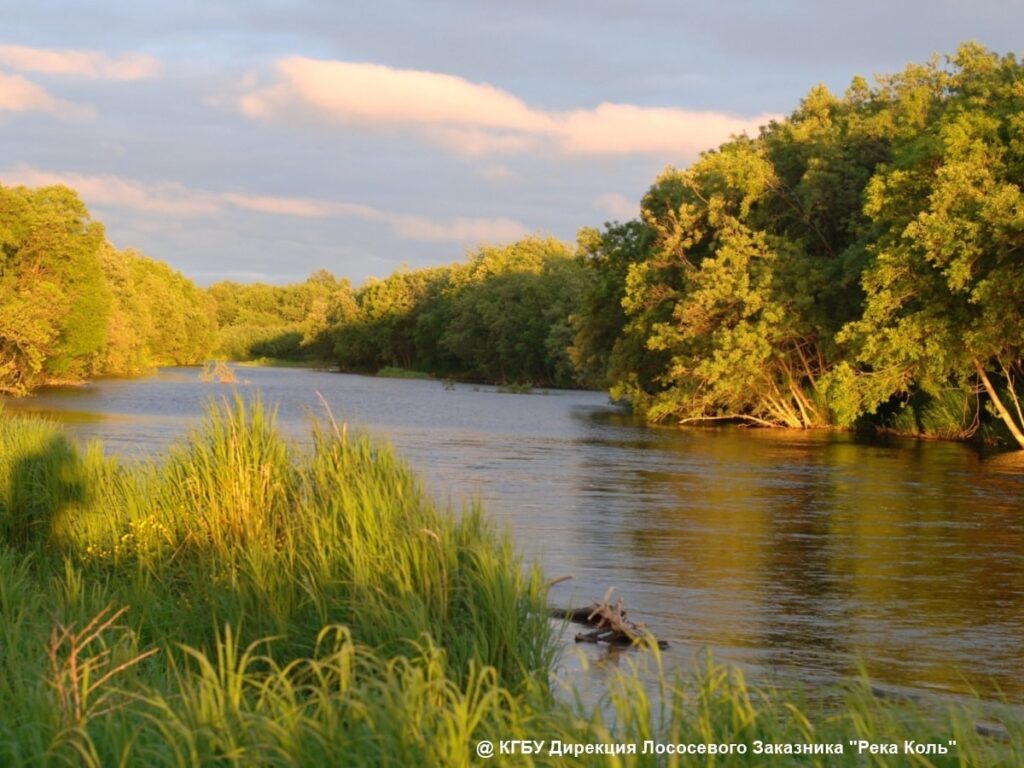
Kliuchevskoy Nature Park
The Kliuchevskoi Nature Park is the most powerful volcanic area not only in Kamchatka, but also in Russia. There are 13 volcanoes here, 4 of them active.
Vulcan Kliuchevskaya Sopka is the highest peak of the peninsula (4,750 m) and one of the most active volcanoes in Kamchatka and the world. The volcano is characterized by frequent eruptions both from the summit crater and side eruptions. During 270 years of eruptions, more than 50 strong eruptions are known.

Nameless Volcano (2882 m) is located in the middle of the Kliuchevskaya group of volcanoes between the Kamen and Oval Zimina volcanoes. It is one of the most active volcanoes in Kamchatka. Its eruptions occur almost every year. It is characterized by cyclic activity. Long periods of rest (hundreds of years and more) are interspersed with periods of active activity, and each such activation begins with the strongest eruption. At present, this crater is almost filled with a lava dome that has grown over the past forty years. At the top of the volcano there is a very powerful outgassing.
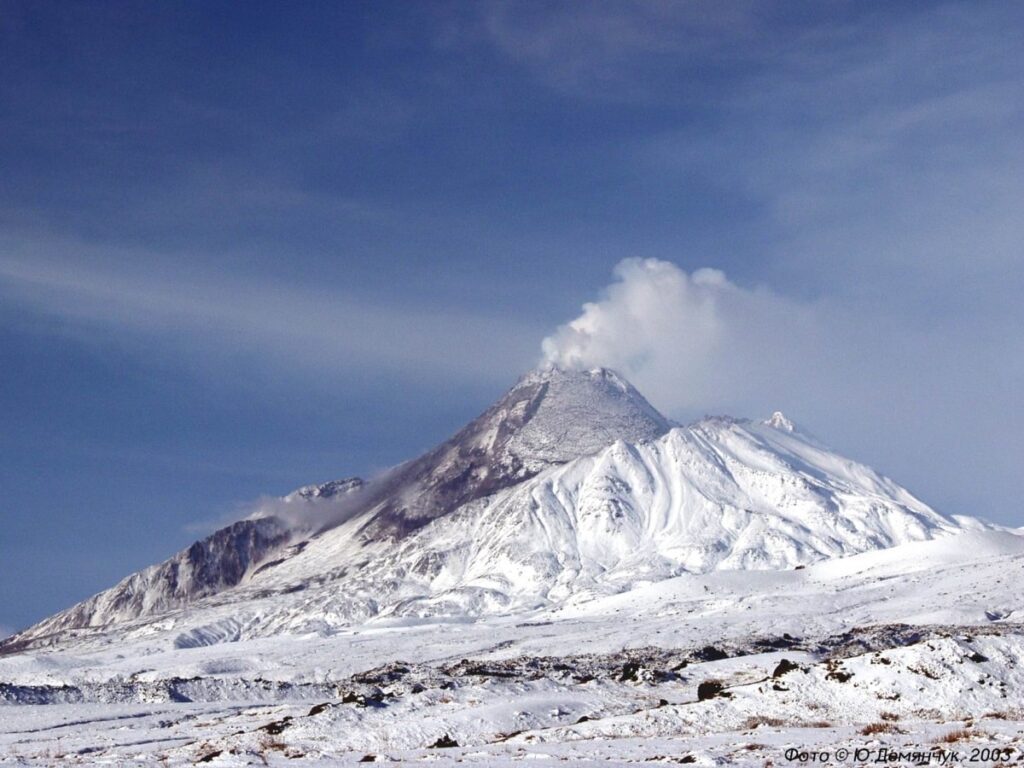
Extinguished Kamen volcano (4575 m) adjoins Bezymyannyi volcano from the north, in fact Bezymyannyi volcano is "planted" on the southern slope of Kamen volcano. It is the second highest and the most difficult peak in Kamchatka for mountaineers. Its western slopes are rather smooth, steep up to 45 degrees, covered with a thick layer of ice. To the west of Kamen volcano lies the Bogdanovich Glacier, and on the northeastern side is the Schmidt Glacier.
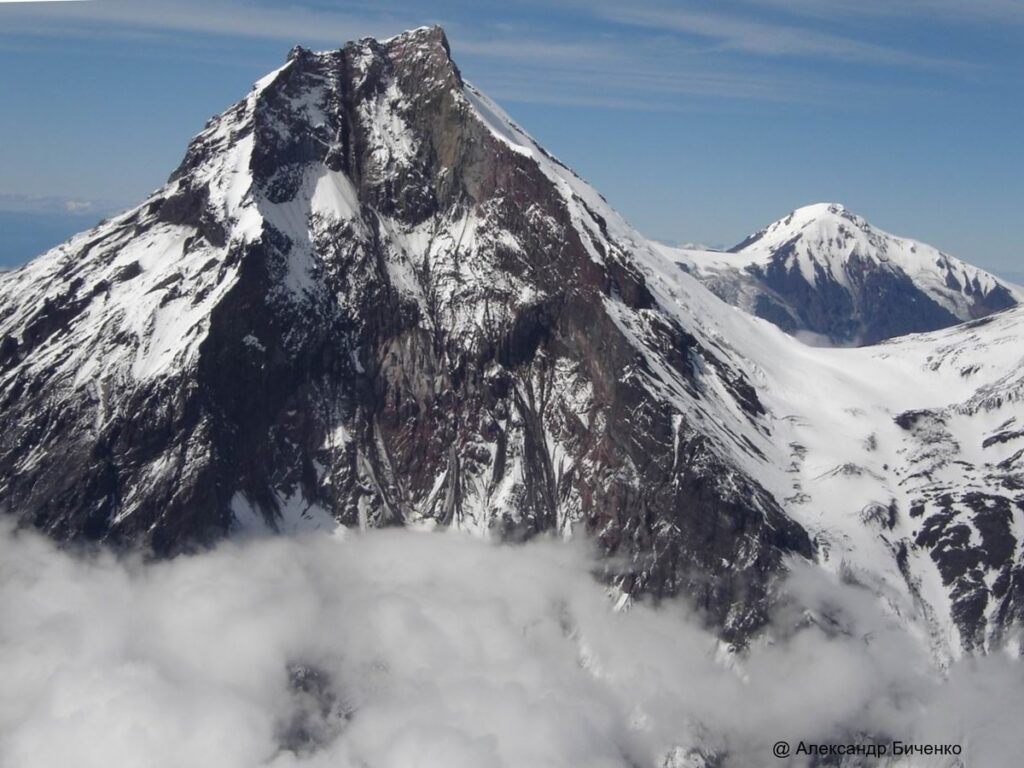
Extinguished Middle Volcano (2978 m) is located northwest of the Kliuchevskaya Sopka volcano. The volcano is located in the Kliuchevskoi group of volcanoes, between the Kliuchevskoi and Plosky volcanoes.
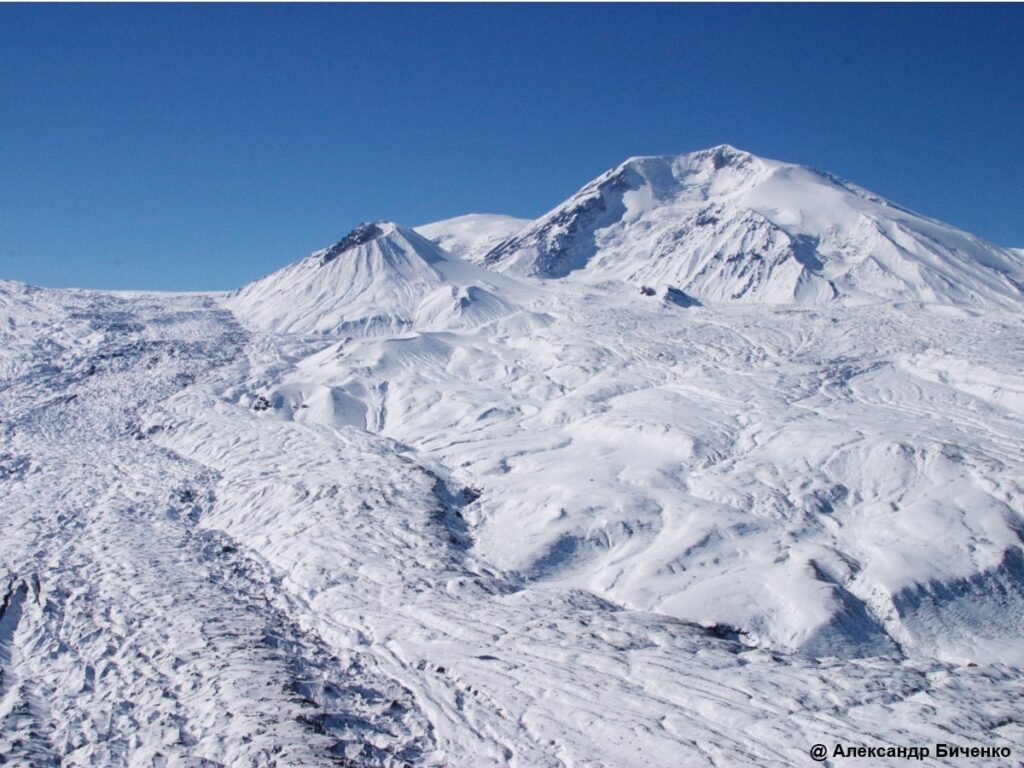
The top of an extinct volcano Krestovsky (Near Plosky) (4057 m) is located 4 km west of the summit of Srednee volcano. Krestovsky volcano together with its southwestern neighbor volcano Ushkovsky (Dalniy Ploskiy) (3943 m) is a single volcanic massif of Ploskiye Sopoki. Deep ravines with glaciers are cut into the body of Krestovsky volcano. The Ushkovsky volcano is the largest volcanic structure in the Kliuchevskoi group of volcanoes. Its huge flat top with dimensions of 4x6 km is an ice-filled caldera. This circumstance makes the volcano potentially very dangerous, as its awakening may result in the formation of destructive mudflows. The volcano is classified as active.
Volcano Bolshaya Udina (2923 m) is a stratovolcano with a fairly regular cone. The volcano is extinct, the date of the last eruption is not precisely determined. Volcano Malaya Udina (1945 m) adjoins Bolshaya Udina volcano from the eastern side, the height of the pass between them is 1300 m. The volcano has a regular cone riddled with barrancos. Bolshaya Udina and Malaya Udina are the southernmost in the Kliuchevskoi group of volcanoes.
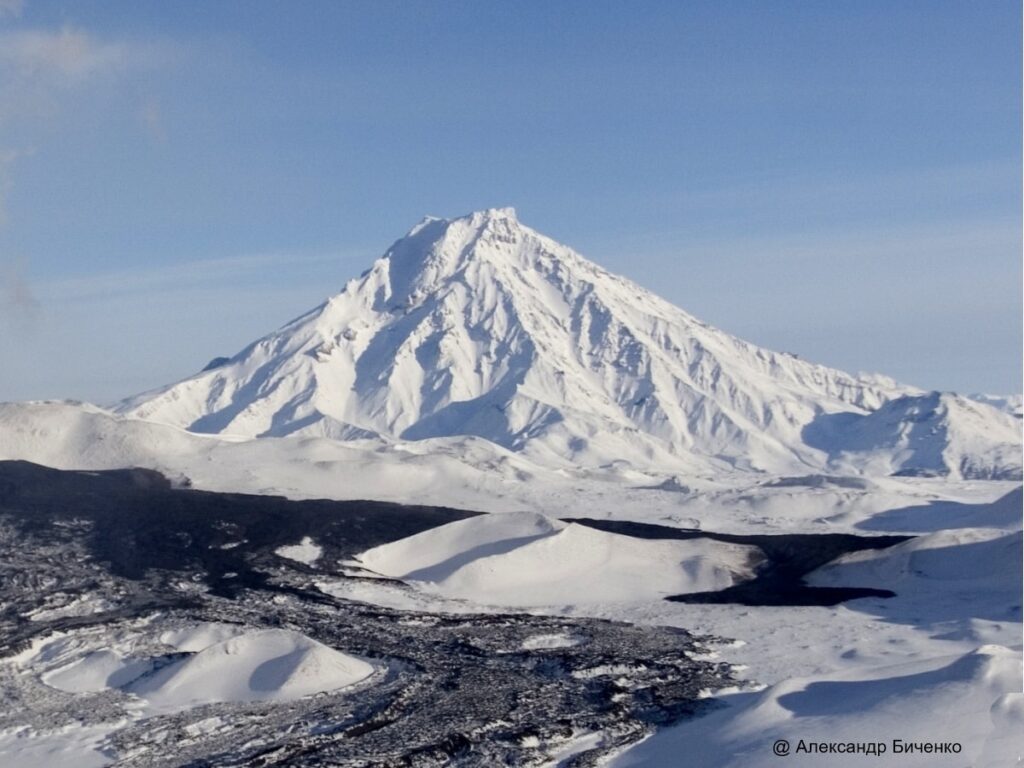
The volcanoes of Zimine are located in the southeastern part of the Kliuchevskoi Dol. They form a large mountain massif. In the structure of the massif two parts can be distinguished: Bolshaya Zimina, located on the western side, and Malaya Zimina - on the eastern side. In turn, Bolshaya Zimina has two clearly defined peaks - Oval (3081 m) and Ostraya Zimina (2744 m) volcanoes. Malaya Zimina also has another name - Gorny Zub (2242 m).
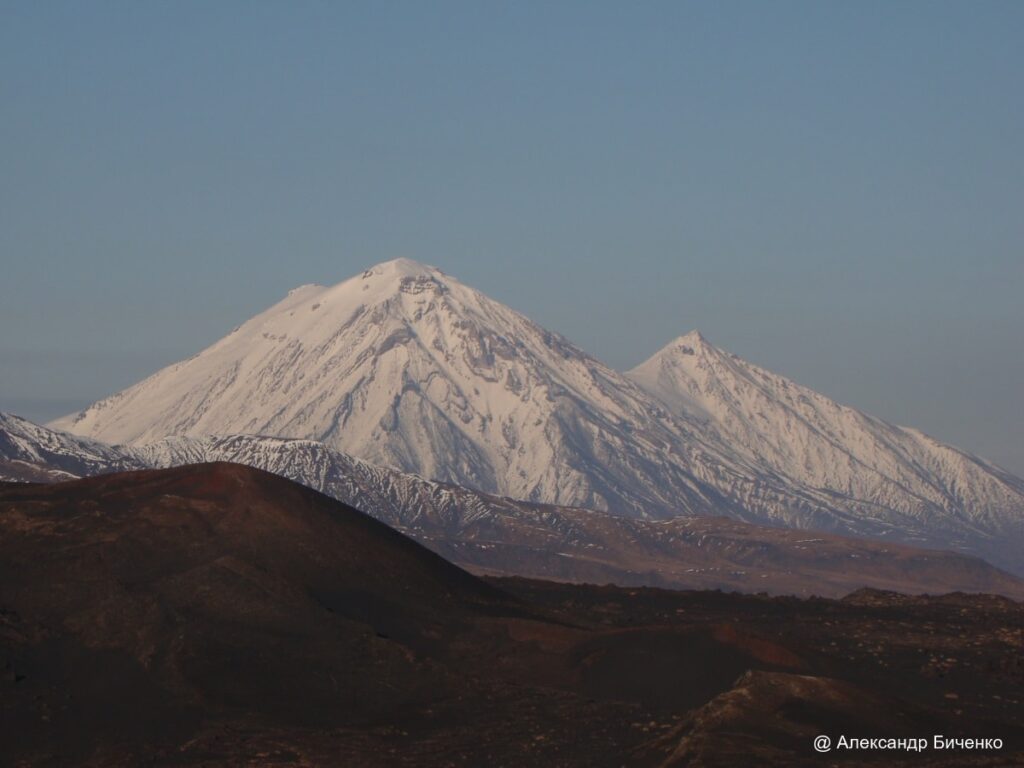
Volcanoes Ostry Tolbachik (3,682 meters) and Plosky Tolbachik (3,140 m) form a large volcanic massif, bounding the Kliuchevskaya group of volcanoes from the southwest. Ostry Tolbachik is an extinct stratovolcano with a shattered summit. Flat Tolbachik is a stratovolcano whose summit is cut by two nested Hawaiian-type calderas. The larger of them, 3 km in diameter, is filled with a small shield volcano and glacier, forming a characteristic flat top. Within it is a young caldera, 1.8 km in diameter and about 400 m deep, which was formed during the volcano's penultimate eruption in 1975-76. On the slopes of Plosky Tolbachik and in the adjoining Tolbachinsky Dol there are more than 120 cinder cones of side eruptions. Tolbachik belongs to the volcanoes of the Hawaiian type.
Bystrinsky Nature Park
There are more than 100 volcanoes and 1000 volcanic structures in the territory of the natural park. The largest volcanic structures include Ichinsky, Alnei, Anaun, Chingengein, Anegatan, Bolshoy Payalpan, Levinson-Lessing and Hangar volcanoes. Of all the volcanoes in the Bystrinsky Nature Park, only one is active - Ichinsky.
Ichinsky Volcano (3607 m) is a typical stratovolcano composed of lava flows interlaced with clastic material. Its rocks are characterized by a rather acidic composition: they are andesites, andesite-dacites and dacites. Ichinsky volcano is relatively young. It began to form 10-15 thousand years ago, and individual outbreaks of its activity occurred already in historical time. Now the volcano shows its activity only by solfatars and fumarolic jets. Solfataras with powerful steam jets come out on the northern slope at a height of about 3000 m in an ice basin colored with sulfur deposits. Fumaroles also emerge on the northeastern slope at a height of 2200 m from cracks in andesites of the ancient somma of the volcano. Fumarolic jets contain 98% of water vapor, as well as nitrogen, oxygen, carbon dioxide and hydrogen sulfide. Sulfur deposits are visible at the jets' exit.
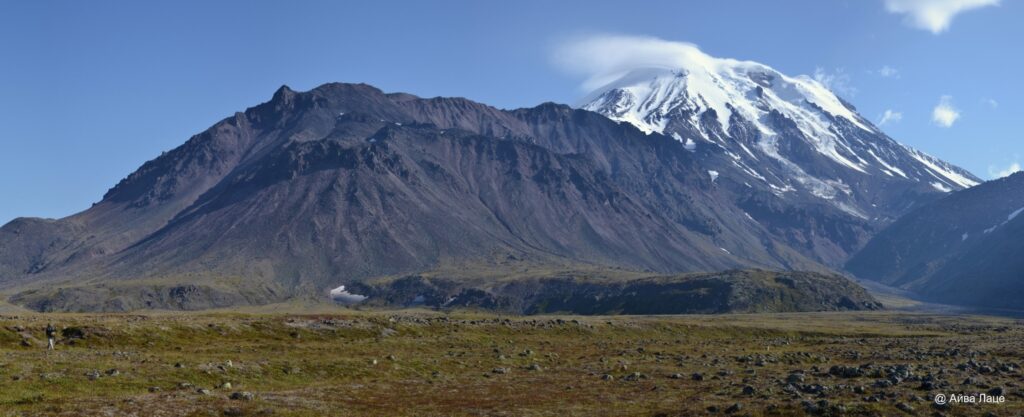
Lakes Ketachan, Angre, Arbunat and Tymkychytgyn were formed in depressions underlain by lava flows at the foot of Ichinsky volcano. About 10 km from the foot of the volcano, on one of the tributaries of the Babav River, there is a small waterfall consisting of 2 high platforms. It is especially spectacular in August, when its banks are covered with greenery and the water, especially after rains, acquires a milky-white color due to the high content of mechanical impurities.
Alney Volcano (2581 m) is located in the eastern part of the Middle Range, at the top of the Bely Ridge. The volcano is heavily eroded, with younger basalt lava flows on its eastern slope and a large glacier at the summit, giving rise to the Kirevna, Tigil, Belaya, Perevalovaya and Kalgauch rivers. Despite its relatively low altitude, the volcano is a traditional mountaineering destination.
Anaun Volcano (1828 m) by its structure is a stratovolcano rising on the watershed of the Middle Range in the upper reaches of the Khairyuzovaya, Tigil and Anavgai rivers. The bottom of the caldera-shaped depression with a diameter of 15 km, in which the volcano is located, is flooded with lavas. The stratovolcano has a conical shape with a sharp top, cut from the northern side by deep gorges. At the top there is a crater expanded by erosion to an ellipsoidal shape. At the foot of the volcano are numerous side cones. The volcano is within a three-day hike from the villages of Esso and Anavgai.
Dygeren-Olengende Volcano (1950 m above sea level) One of the main sights of Esso village. Esso. The majestic extinct volcano rises above the neighboring mountains and, like an old father, watches them, his children and grandchildren from above. People call it Ulegindya, and small children call it Ulegindya-Seedy Head, because even in summer snow does not always come down from the top of the volcano.
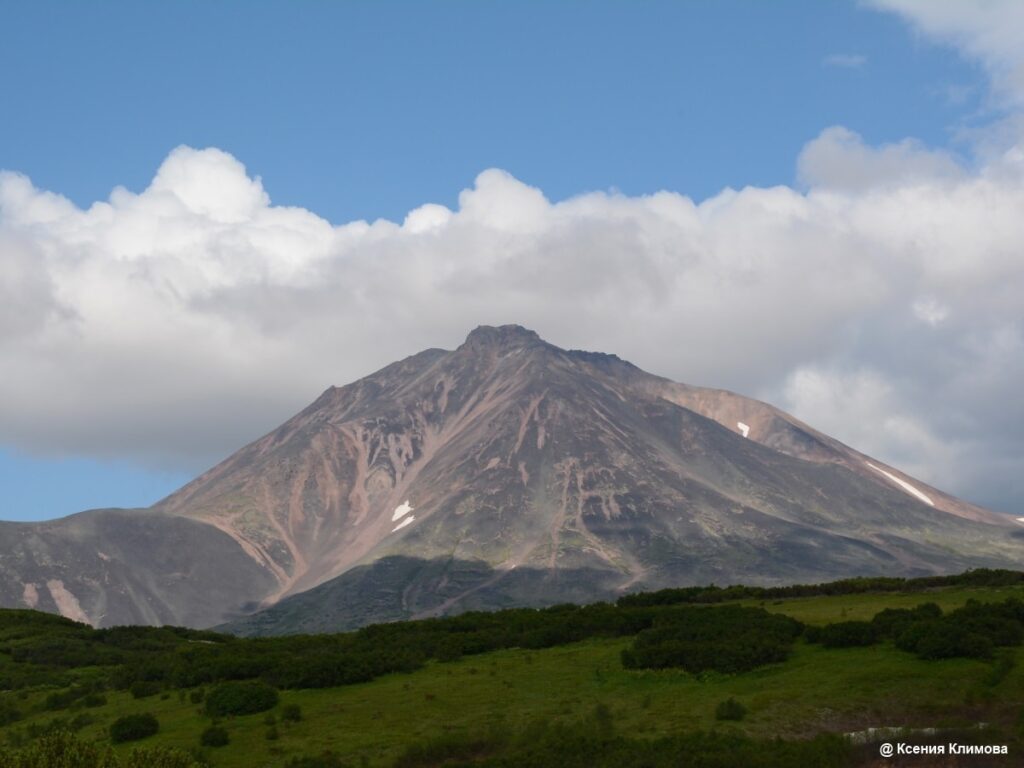
South Kamchatka Nature Park
On the territory of the South Kamchatka Nature Park there are six volcanoes, of which 4 are active.
Mutnovskaya Sopka (2324 м). A complex stratovolcano formed by four cone-shaped massifs and a double caldera with a diameter of 8-10 km. At the top there are two craters of 3×1.5 km in size, cut into each other. There is another small crater on the northern slope. Active fumarolic activity is concentrated in the northern crater and in the crater Active Funnel. The most high-temperature fumaroles are located on the walls of the Active Funnel crater - jets of steam and gas burst out of cracks at the foot of the walls at a speed of more than 100 m/sec, their temperature reaches 700 degrees Celsius, so the walls of the cracks are red-hot. In the northern crater there are two separate fumarolic fields - Upper and Donnoe. The specific form of thermal manifestations of the Donnoe field are drainless boiling mud cauldrons. The largest of them has a diameter of about 7 meters, and the height of the fountain of boiling water reaches 2 meters. In the craters of the volcano, glaciers cover an area of about 2 km2. In the gorge of the Mutnaya River a waterfall descends from the ledge of the lava plateau. Mutnovsky is one of the most active volcanoes in Kamchatka.
Asacha Sopka (1911 м). An extinct volcano with four peaks, merging with Mutnovskaya Sopka at its base.
Vilyuchinskaya Sopka (2175 м). Stratovolcano with a cut top and a half-destroyed crater. There was a gas eruption in 1957.
Khodutka Sopka (2077 м). An extinct volcano, located on the edge of a 7×8 km caldera formed on the site of a shield volcano. On the northern slope of Khodutka there is a volcanic cone Priemysh (1203m).
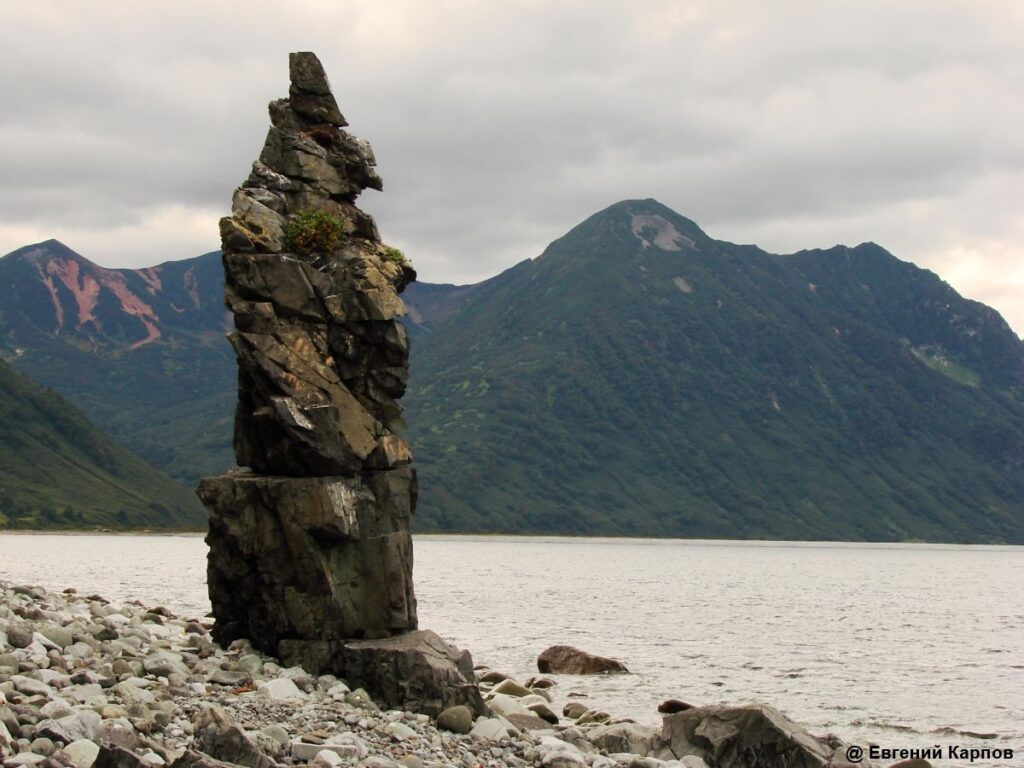
Xudach Volcano (other name - Stubel's volcano, 1079 m). Shield volcano with a base diameter of 35 km and a caldera 7 km in diameter at the top. There are 2 lakes in the caldera - Kliuchevoye and Shtyubelya. Currently fumarolic, Plinian type of activity.
Zheltovskaya Sopka (1953 м). Stratovolcano in the form of a regular cone with a somewhat truncated double-headed top. The crater of the volcano is an oval funnel with the size of 500x800 meters with steep walls and uneven bottom.
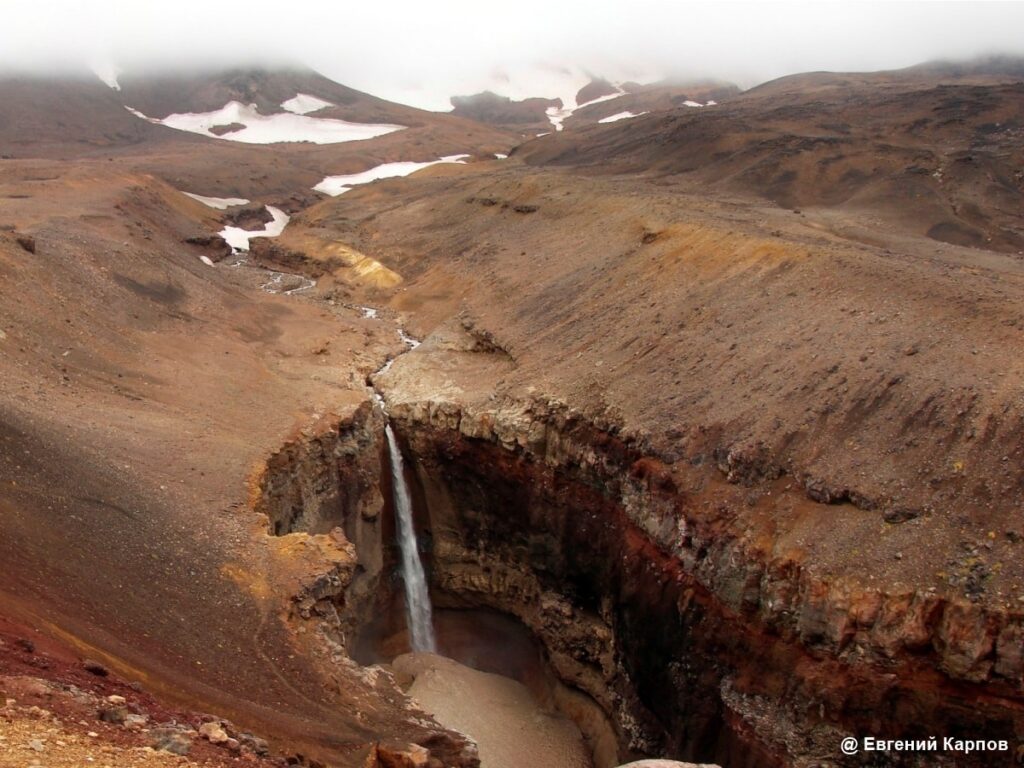
Nalychevo Nature Park
There are 7 volcanoes in the Nalychevo Nature Park, 4 of which are active. The central part of the Nalychevo valley is surrounded by a chain of the Avacha and Dzendzur-Zhupanov groups of volcanoes.
Avacha group of volcanoes - one of the largest Quaternary in age volcanic knots in Kamchatka. Its area is 1600 kilometers2. Located near the cities of Petropavlovsk-Kamchatsky and Yelizovo, the "home" volcanoes are accessible, convenient to visit and therefore very popular among the citizens and guests of Kamchatka. The volcanoes of the Avacha group are a traditional place of weekend tourism, mass ascents of beginner climbers, a real Mecca for alpine skiers and paragliders, a place of summer training of alpine skiers and cross-country skiers. At the foot of the Kozelsky and Avachinsky volcanoes there are ski bases, where, thanks to snowfields, it is possible to practice sports in summertime.
Avachinsky (2751m) is an active, complexly built beautiful volcano of the Somma-Vesuvius type with a perfectly regular cone. At the top of the cone there was a crater 350 m in diameter and 220 m deep, but in 1991, during the eruption process, the crater funnel was filled with lava, in different parts of which fumaroles depositing sulfur are now active.

Kozelsky (2190 m) is an extinct, heavily eroded volcano with a large explosive crater from which a small glacier descends. The rocks of this volcano contain grains of the rarest mineral - black diamond (carbonado), known only from a few places on the planet.
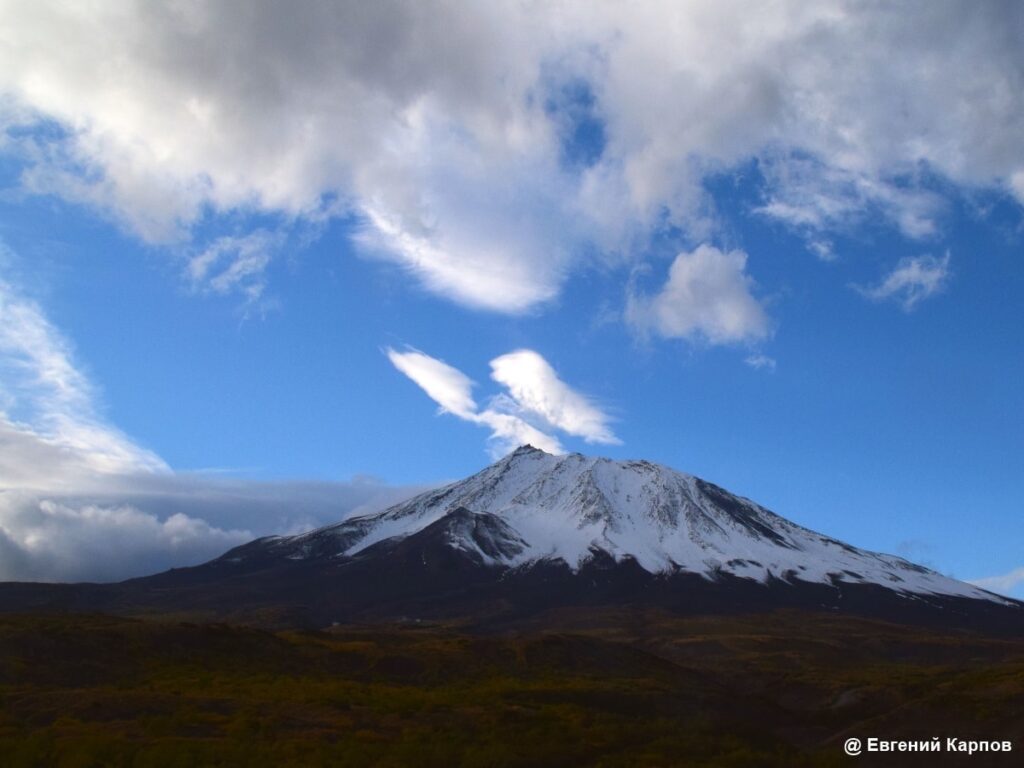
Koryak (3456m) is a stratovolcano with a regular ribbed cone. Glaciers descend from the powerful cirque at the summit and along the barrancos in different places. In the pre-top part fumaroles float along cracks, and in the crater there are heated sites. The rocks in these places are metamorphosed to opals, alunites, multicolored clays with abundant deposition of sulfur, gypsum, ammonia, etc.
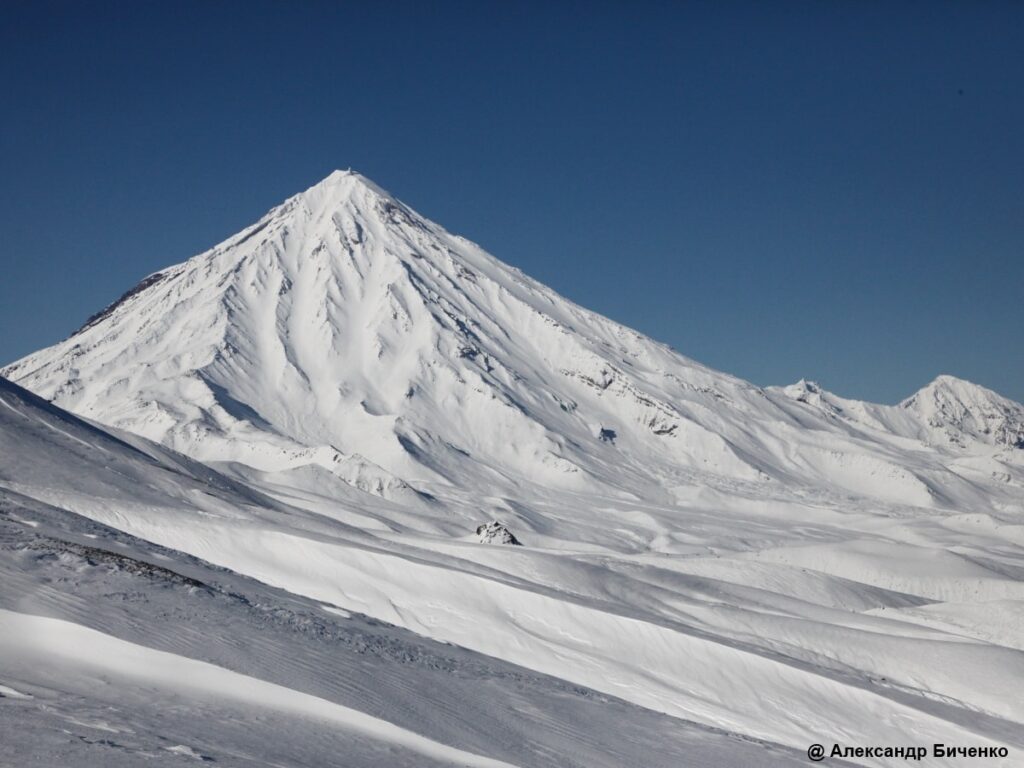
Aric and Aag (2310 m) are extinct, highly eroded volcanoes with dizzying steep precipices, karas and potholes up to 400 m deep. The apical part of the volcanoes consists of multicolored metamorphosed rocks.
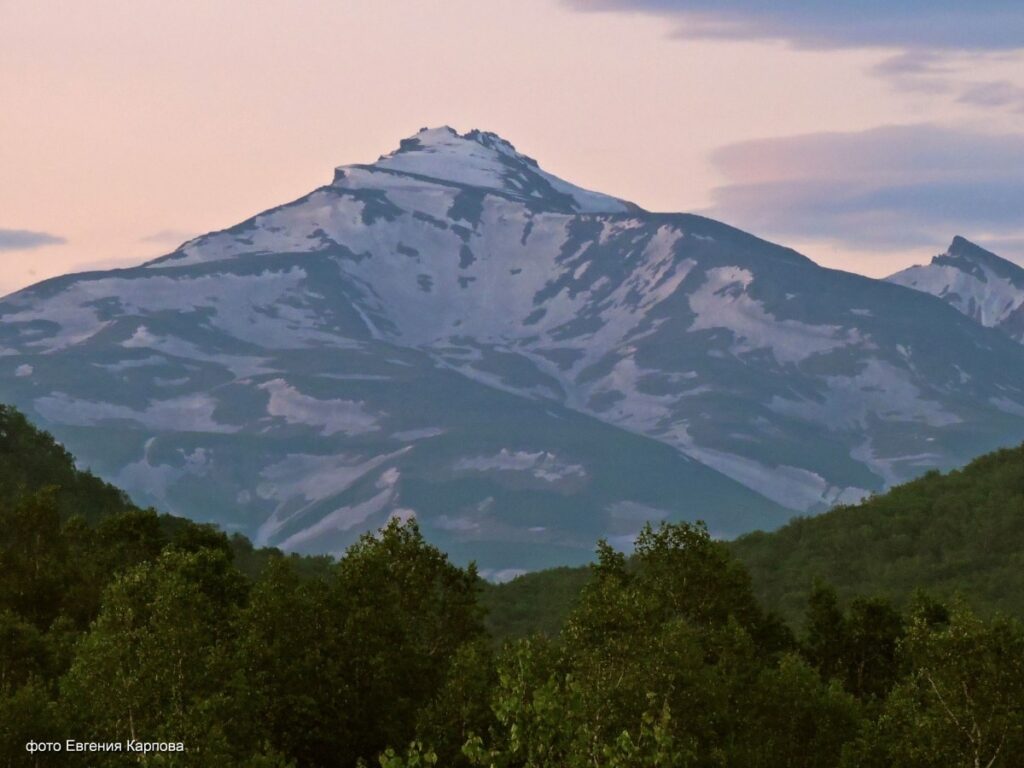
Dzendzur-Zhupanov group of volcanoes
Zendzur (2157 m) is a ruined volcanic massif with a crater in the form of a glacial carapace. In the southeastern part of the volcano there is a 5x20 m fumarole cauldron filled with melt water. Fumaroles are active along the banks and at the bottom of the cauldron, due to which the water temperature reaches 85-90°C. About 40% of the water volume consists of suspended sediment. The walls of the cauldron are composed of multicolored clays.
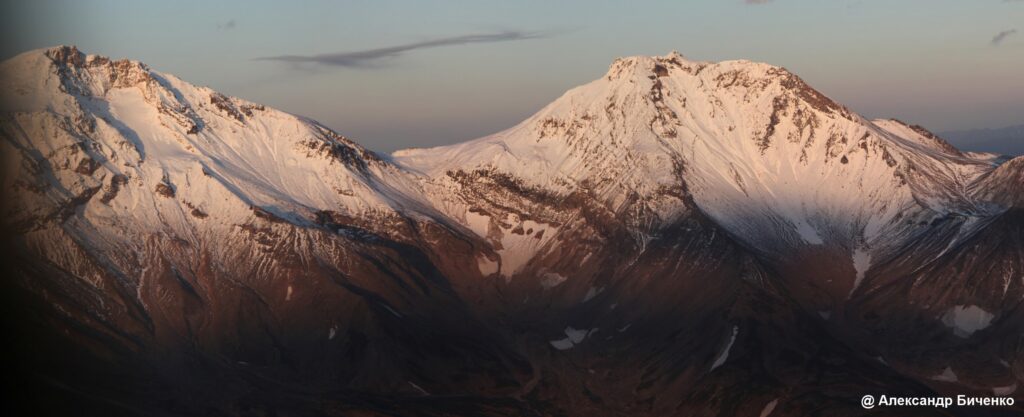
Zhupanovsky (2958m) is an active volcano formed by several cones of stratovolcanoes with craters on their tops. In two of them, fumaroles float among powerful snowfields. The rocks around the fumaroles are metamorphosed; nugget sulfur forms here a continuous cover of several tens of square meters.
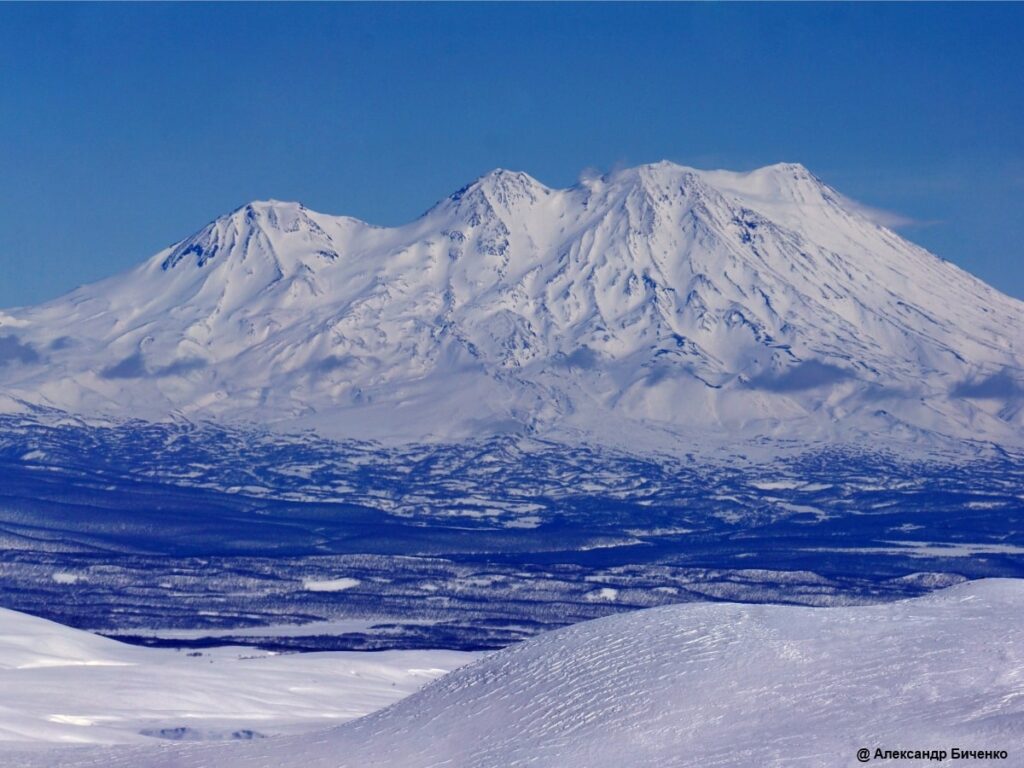
The world-famous volcanoes: Avachinsky and Klyuchevsky, Ostry and Plosky Tolbachiki, the highest active volcano in Eurasia - Klyuchevskaya Sopka, hot springs of Nalychevskaya valley and thermal fields of Mutnovsky volcano, Esso village and Anavgai village are the pride of Kamchatka Krai and the Russian Federation, active centers of preservation and development of original culture of indigenous peoples of the North.
The material was prepared by Maria Mariko, Public Relations Specialist of the Kamchatka Volcanoes Nature Park KGBU
The editorial staff of the portal "All Russia" brings sincere gratitude to the staff of KGBU "Nature Park "Volcanoes of Kamchatka", personally to the public relations specialist of KGBU "Nature Park "Volcanoes of Kamchatka" Maria Mariko, as well as to Alexander Bichenko, Vladimir Burym, Ksenia Klimova, Aiva Latsa, Elena Nenasheva, Yuri Kalinin, Evgeny Karpov for the provided photos.


